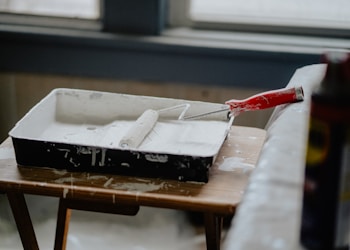Junk removal may seem all easy-peasy at first, just thinking about it. But when it comes to actually do it, it’s a rather complex task. More so if you have bulky junk items or large volumes of junk. Apart from the removal, disposal is a whole other challenge. You have to figure it out before taking on removal on your own. You obviously need to have a proper plan of execution from removal to disposal. If you cannot figure this out, then you are better off hiring professionals like jiffyjunk.com to do it for you. However, regardless of the task being a DIY or by a junk removal company, safety measures have to be in place.
First of all, you should not handle all junk the same way. There are junk items that are potentially hazardous, while some are just general biodegradable trash to be disposed of in landfills. You should avoid mixing up everything and piling them into a truck for disposal in a landfill. There are items that are not accepted in landfills, while others that are hazardous have better ways of disposal. Considering what is hazardous, what is to be recycled, re-used, and the laws surrounding disposal is what makes junk removal a challenge. There are a few things you can consider to prepare for safe and efficient removal:
Separate Your Items
Before embarking on your removal exercise, you should separate your junk based on type. Not all junk will be disposed of, and certainly not disposed of in the same way. This is because of factors such as the condition of the items, materials in the items; whether they are biodegradable or toxic. It is important for you to sort them into these four categories:
Recyclable Junk
This applies to items that are easily recyclable such as plastic, glass, aluminum cans, paper, and cardboard. You can also ask your local recycling center to advise you on other items that can go for recycling. This is to ensure sustainable disposal.
Hazardous Material
Items such as pesticides, batteries, herbicides, household cleaners, paint, and varnish should be the first to consider. In addition, you should remove electronic devices and appliances with hazardous components such as lead, mercury, and oil.
Reusable Junk
Things such as furniture, kitchenware, household appliances, and clothing that are in very good condition shouldn’t be disposed of if they can help others. Not only will you have practiced sustainable ‘disposal’, but you will have also helped vulnerable groups with your donations. There are charity organizations that coordinate pick-ups for donations to fund their programs.
Biodegradable Items
For items that can easily decompose, you can throw them in the trash can. You can also throw them in the dumpster for disposal to a landfill or waste center. These include food remains, yard debris, and any other material considered biodegradable.
Storage for Household Items
Before removing junk, it is important to safeguard other items in the house. This means securing them with covering material such as canvas, protecting the edges, and storing them away. So much could go wrong with the moving and carrying of junk. You could possibly ruin perfectly good items in the process of removing the old ones. In addition, you could get injuries from furniture edges. You can also trip on items standing in the way, or damaged items you intend to re-use. This would result in losses that would have been prevented by keeping them safe in storage.
Consider a Central Location for Junk
Most of the junk will have dust from storage or pose a safety or health hazard for you or the crew handling the pick-up. Once you have organized your junk by separating the items according to type, collect them in a central location category-wise. This will create a clear and accessible pick-up point that guarantees a junk removal exercise that is safe and free of confusion. The recyclables will be in one corner, the hazardous, reusable, and biodegradable will equally have their own spots in your collection location. In addition, having your junk in a central location will make the removal process go smoothly and easily.
Have a Clear Plan for Disposal
While you may consider engaging a junk removal company to handle the disposal, you should also have your plan. You can compare your own plan with the company’s options of disposal to determine what would work for you. For example, there are junk removal companies that have arrangements with recycling, donation, or waste centers. If the junk is not being recycled, it is important to ensure eco-friendly disposal. Ultimately, what matters is you have a clear plan of disposal from the start. You don’t want to end up with a heap of junk, with nowhere to dispose of. The result would be a hazardous environment for you and your neighbors and a whole load of stress.
Final Thoughts On Junk Removal Safety Checklist
By now you have identified what you need to have a successful junk removal. Whether you intend to dispose of your junk, donate, re-use, or recycle, just make sure you have this safety checklist in mind. It may help you stay safe from hazardous material by separating junk. Moreover, it will help you plan proper disposal. In addition, you will have guidelines on how to ensure the safe and efficient removal of junk from your space. You can now clear out your junk and get a new look for your house or business. Enjoy a clean, healthy environment.
















